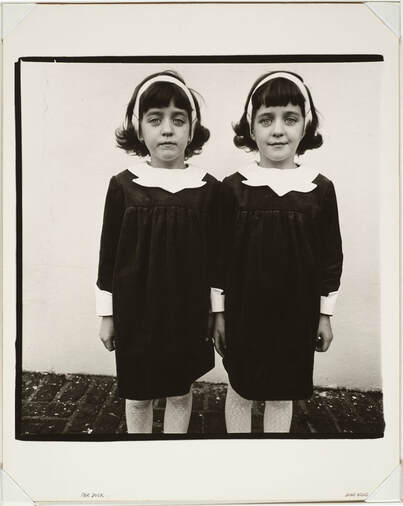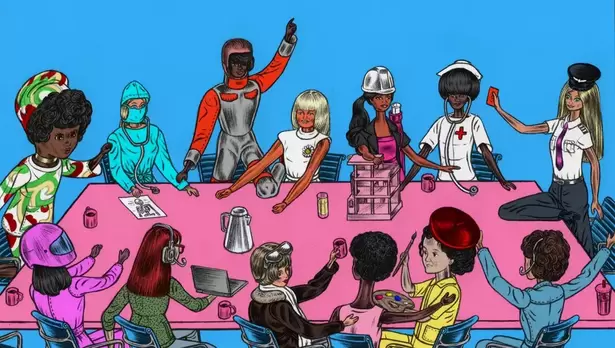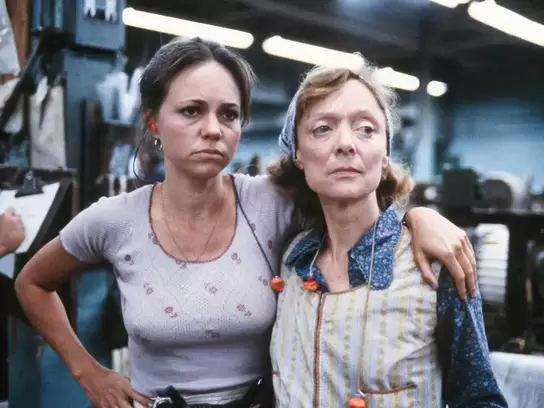What About Gay Bob?The First Openly Gay Doll (for everyone) Was a Trailblazer Toy In 1977, Gay Bob came out of the closet. Thirteen inches tall and plastic, Gay Bob was marketed as the first openly gay doll and made his retail debut in mail-order catalogs. He was sold in a cardboard box designed to look like a closet. Gay Bob's packaging proudly (and wordily) explained what “coming out of the closet” meant: "Hi boys, girls and grownups, I’m Gay Bob, the world’s first gay doll. I bet you are wondering why I come packed in a closet. ‘Coming out of the closet’ is an expression which means that you admit the truth about yourself and are no longer ashamed of what you are... A lot of straight people should come out of their 'straight closets' and take the risk of being honest about what they are. People who are not ashamed of what they are, are more lovable, kind, and understanding. That is why everyone should come out of “their closet" so the world will be a more loving, understanding, and fulfilling place to live. Gay people are no different than straight people. If everyone came out of their closets, there wouldn’t be so many angry, frustrated, frightened people... It’s not easy to be honest about what you are; in fact it takes a great deal of courage. But remember, if Gay Bob has the courage to come out of his closet, so can you!" At face value, Gay Bob’s message about the merits of coming out seems earnest, espousing the values of courage, honesty, and living authentically; however, the branding and design of the Gay Bob doll are brash. Gay Bob’s story is deceptively complicated and intertwined in toy and LGBTQ+ history. https://nhm.org/stories/what-about-gay-bob How Ronald Reagan led the 1960 actors' strike – and then became an anti-union presidentHow Ronald Reagan led the 1960 actors' strike – and then became an anti-union president Production on US film and television sets has ground to a halt as Hollywood actors have joined writers in walking off sets. At issue are residuals (or royalties), streaming services and the use of artificial intelligence. The last time there was a "double strike" was 1960, when future United States President Ronald Reagan was head of the powerful Screen Actors Guild (SAG). Reagan made his film debut in 1937. He was a quintessential B-movie star of the Hollywood Golden Age, acting in low-budget "second feature" movies. Over his career he churned out more than 50 films, appearing in Westerns, thrillers, war films and romantic comedies, as well as famously co-starring with a monkey called Bonzo. In the 1930s and '40s, Reagan was a self-proclaimed "New Deal Liberal" and a proud supporter of President Franklin Delano Roosevelt. Reagan became a SAG member within a month of moving to Hollywood. In 1941, his then-wife Jane Wyman — a member of the union's board of directors — suggested him for a vacancy on the board. https://www.abc.net.au/news/2023-07-21/ronald-reagan-led-1960s-actors-strike/102626930# Superfly Photos From A Late, Great MasterFlared-leg pants, oversized glasses and hats. Unflinchingly proud expressions. Groovy dance moves. This was the youth culture of 1960s and 1970s Bamako, the capital city of Mali. And it was captured by Malian photographer Malick Sidibe, bringing international recognition and big deal awards. And it's being celebrated in the first major posthumous exhibit of his images, "Malick Sidibe: Mali Twist," which is at the Fondation Cartier pour l'art contemporain In Paris through February 25. Sidibe died in April 2016 at age 80. Sidibe's history with photography is a fascinating one. He was born in 1935, and spent his childhood "walking barefoot in the bush with the oxen," he told Brigitte Ollier, who developed the current exhibit with curator Andre Magnin, a longtime admirer of Sidibe's work. But Sidibe's father decided he should study. At school, Sidibe discovered he had a knack for drawing. His artistic ambitions shifted, however, when he landed a job working for a photographer. Before long, he opened his own place, Studio Malick, which beckoned with a neon sign — and the chance for immortality. "I think photos are the best way of living a long time after you die," Sidibe once told Magnin. "That is why I invested my whole soul in them, my whole heart, to make my subjects more beautiful." Visitors to the exhibit can see vintage prints as well as some made exclusively for "Mali Twist" from negatives preserved by Magnin. Here's a sampling. https://www.npr.org/sections/goatsandsoda/2017/12/30/572562953/photos-malick-sidibe-shows-malis-youth-with-a-groovy-twist Identical Twins by Diane Arbus - Story Behind the Iconic PhotographThe black and white photograph I would like to talk about today is called “Identical Twins” and was taken in Roselle, New Jersey in 1967. Arbus met the twins at a Knights of Columbus hall during a Christmas party for twins and triplets. Even though no one actually knew how she got there. The photo has been described as creepy, freakish or haunting. Arbus was known to photograph “different” subjects, outsiders, or people on the fringes of society. The great recurring theme of her work is a sense of otherness and that is also something we see in this photograph. The girls are the same, but different. We can see the photo was shot at a waist-level, so perhaps shot with her Rolleiflex medium format twin-lens reflex that she was using. They are both looking straight into the camera, which is also one of the signature styles for Arbus’s portraits. It was perhaps the isolation against the wall that made them look like the only two children in the room. Seven-year-old sisters Cathleen and Colleen Wade were attending a Christmas party where they met Diane Arbus. They wore almost the same clothes except their white stockings. When you look at the photograph for the first time it is pretty clear, at least for me, that the girls are identical twins. However the more you look at them more you see the small differences that make the picture so interesting. Even though they have same green clothes (which appears black in the photograph) and the same haircut, we can clearly see the difference in their facial expression and body language. The girl on the left shows no sign of emotion and looks almost bored, not caring too much, and the other is slightly smiling. We can see their individuality in their body language. The twins' father once said about the photo, "We thought it was the worst likeness of the twins we'd ever seen." It is safe to say the photo was the most popular one of Diane Arbus. Perhaps that’s why it became an inspiration for many artists; the most famous example is probably Stanley Kubrick’s horror movie The Shining. He saw the abnormality in the sameness and their soulless gaze. The photograph is said to be one of the most expensive photographs. It was sold in 2004 for 480 thousand dollars. It was also one of Arbus’s favourite photograph that she picked for her only portfolio called A Box of Ten Photographs which was a self-produced collection she put together with Marvin Israel. The current value is estimated at around 5 million dollars. https://aboutphotography.blog/blog/2019/12/9/identical-twins-by-diane-arbus-story-behind-the-iconic-photograph?format=amp It’s Not Over: Posters and Graphics from Early AIDS ActivismIt’s Not Over: Posters and Graphics from Early AIDS Activism is a temporary public art exhibit that acknowledges the longstanding fight for resources and respect for people living with HIV/AIDS. Mounted for World AIDS Day on December 1, 2020 in West Hollywood, It’s Not Over amplifies voices of AIDS activists and community organizers by featuring a curated set of activist posters and images from mid 1980s to late 1990s selected from ONE Archives at the USC Libraries. This exhibit is curated by Umi Hsu, Jaime Shearn Coan, and Saphir Davis; and organized by ONE Archives Foundation. The exhibit includes pamphlet graphics by Keith Haring, picket signs from historic protests in Los Angeles and New York, flyers for the first ACT UP/LA meeting in 1987 and Gay Men of African Descent (GMAD), safer sex campaign posters featuring men and women of color, World AIDS Day and Day Without Art posters, and more. World AIDS Day was first observed by the World Health Organization in 1988; it continues into the present with ever-shifting emphasis. The exhibited images recall earlier periods of organizing and resistance, which can help to galvanize us in the present. In the style of Yoko Ono and John Lennon’s protest art messaging: “War Is Over! (If You Want It),” this public art exhibit disseminates an important reminder that the HIV/AIDS epidemic is not over, with 38 million people living with HIV globally in 2019. And as we know, its ongoing impact disproportionately affects the Black community. As of 2018, 42% of new HIV cases have occurred within the Black community, which only makes up 13% of the US population. The “It’s Not Over” message, coupled with a diversity of experiences represented through the selected images, illustrates a multi-perspectival story of HIV/AIDS activism and highlights the longstanding struggle against HIV discrimination. https://www.onearchives.org/its-not-over-posters-and-graphics-from-early-aids-activism/ 20 Amazing American Women Mugshots in the 1960sThe police mugshot photograph was developed as early as the mid-nineteenth century, and it has since developed as an iconic photographic type in its own right. Formulaic and recognized the world over, it was developed at a when the Victorian fascination of labelling and categorizing of people was at its height. Remarkably, the mugshot photograph has changed little in 150 years. Since the mid-’90s, Manhattan-based graphic designer Mark Michaelson has collected over 10,000 vintage mugshots of everyday people from all over the country. Each closeup has a detail that caught the designer’s eye, from scars and bandages to crooked teeth and bizarre haircuts. Michaelson has also released a book of these photographs. In theory, these photographs are formulaic and regular as we would expect from a mugshot. But in reality, every single one is unique - each face telling a different story. When looking at these photographs, you can't help but imagine what sort of situations the arrested were involved in; faces look back at the camera smiling, blinking, scowling. It's also an amazing timeline of different fashions and hairstyles. https://www.vintag.es/2017/03/20-amazing-american-women-mugshots-in.html?m=1 The creator of the first Black Barbie grew up in segregated South Carolina and went on to become principal designer for MattelThe creator of the first Black Barbie grew up in segregated South Carolina and went on to become principal designer for Mattel Kitty Black Perkins is renowned in the toy industry for designing the first-ever Black Barbie, and was a pioneer who helped diversify the mega-popular doll franchise. Born in racially-segregated Spartanburg, South Carolina in 1948, Black Perkins grew up playing with white dolls gifted by her mother's employers. She went on to work in the fashion industry after graduating from college. Black Perkins grew up admiring her dapper father, who was "the most spectacular dresser," she told Greenville News in 2019. Black Perkins bought her first Barbie doll from Toys R Us when she was 28 years old to prepare for an interview with Mattel. The company asked her to take a Barbie home and to bring it back in a week with a new wardrobe. Black Perkins hand-sewed a floral jumpsuit with tiered legs and puff sleeves, along with a matching wide-brimmed hat for her Barbie. Though Mattel found the outfit too elaborate for mass production, they hired Black Perkins to design clothes for Barbie. https://www.insider.com/barbie-kitty-black-perkins-designer-diversity-mattel-dolls-2023-4#in-1969-barbie-got-a-friend-talking-christie-christie-would-be-the-first-black-doll-under-the-franchise-even-if-she-wasnt-a-barbie-5 Decoding Barbie’s Radical PoseDecoding Barbie’s Radical Pose The “Barbie” movie glides over the history of dolls as powerful cultural objects. By Alexandra Lange In Barbieland, as envisioned in “Barbie,” the writer-director Greta Gerwig presents a world where positions of power are held by female dolls such as a Black President Barbie and a Filipina American Supreme Court Justice Barbie. Indeed, in the pink landscape of “Barbie,” all the jobs are held by women, and the Dreamhouses are owned by them, too; the Kens are mere decoration until one of them catches a glimpse of men’s lives in the Real World. But, by making patriarchy the villain of the story, the movie glides over the decades in which Mattel, the company that makes Barbie, waffled on racial representation and the depiction of women’s professional roles. “The Barbie world you see in the film is Malibu Barbie from 1971,” Rob Goldberg, the author of the forthcoming book “Radical Play: Revolutionizing Children’s Toys in 1960s and 1970s America,” says, “but, in reality, the racial diversity of the Barbie character wasn’t there yet.” Goldberg’s book describes how toys became political during the sixties and seventies—from Lionel Corporation’s toy trains’ embrace of anti-violence rhetoric to wooden figurines that allowed children to assemble families more complex than a husband, wife, and two kids. American culture was convulsed by Vietnam War protests, Title IX disputes, and the Equal Rights Amendment debates, and toys were enlisted in the fights for empowerment and equity by women and people of color. Gerwig’s film builds upon, but only occasionally acknowledges, sixty years of attempts to use the popularity of Barbie to advance a more complex agenda than sun, fun, and lots of pink. That’s too bad, both for the historical record and for the new buyers of Barbie that the film’s success will attract. As Goldberg writes, the nineteen-sixties forced toy-makers “to publicly reckon with, perhaps for the first time, their status as entrepreneurs of ideology.” Barbie’s first Dreamhouse, released in 1962, was a cardboard foldout apartment, with modern furniture and a single bed. It had no kitchen, no room for a family, and no room for Ken. Part of the original radicalism of Barbie was that girls could use her to act out fantasies of being something other than mothers. The inventor of Barbie, Ruth Handler, said she was inspired by watching girls play with paper dolls of adult women; shrewdly, she saw a hole in the toy market for a doll who could stand, however precariously, on her own two feet. Gerwig’s film opens with an homage to “2001: A Space Odyssey,” in which little girls clad in trad-wife aprons smash their baby dolls, liberating themselves from playing house. https://www.newyorker.com/culture/cultural-comment/decoding-barbies-radical-pose The Ongoing Relevance of “Norma Rae”By Naomi Fry August 4, 2020 The other night, I found myself once again scrolling the multiple streaming services I subscribe to, and wondering, as I often do, which show or movie would allow me to relax my brain into a pleasing limpness. Should I pick the reality dating show about Indian singles looking to enter an arranged marriage with the help of an unflappable matchmaker? The documentary series about the face-off between federal agents and New York goodfellas in the seventies and eighties? The travel show in which a tetchy British comedian joins celebrities on jaunts to various international locales? All of these seemed solid options, if fairly mindless. Then I noticed that Martin Ritt’s 1979 drama, “Norma Rae,” which I hadn’t watched since high school, was on Hulu. Relaxing my brain, I decided, could wait for the night. For those who haven’t seen the movie, or whose memory of it is hazy, a recap: Norma Rae Webster—played by a ferocious Sally Field, who won an Academy Award for Best Actress for the role, in 1980—is a Southern single mom of two who works on the dim, noisy floor of the town textile mill, where her parents, and, likely, her grandparents, have worked before her. It’s a grim, precarious, and repetitive job, which makes for a grim, precarious, and repetitive existence. Early on in the movie, we see her attempt to rouse her mother, who has gone temporarily deaf from the incessant din of the mill’s machines. The plant doctor is unimpressed: “Now, you know it happens, Norma Rae. It happens all the time!,” he says, suggesting that the older woman “can get herself another job” if this one isn’t to her liking. But in their mill town there is no other job, and no real alternative to the low-paying and dangerous work that the plant provides. https://www.newyorker.com/recommends/watch/the-ongoing-relevance-of-norma-rae Jaw-Dropping Christian Ephemera From The 20th CenturyJaw-Dropping Christian Ephemera From The 20th Century Putting the fear of God in everyone: Christian ephemera from the 20th Century. It’s not about God; it’s about the people: https://flashbak.com/jaw-dropping-christian-ephemera-from-the-20th-century-51651/ Making its debut in 1969, the beloved children’s television show was shaped by the African-American communities in Harlem and beyondForty years ago, upon the tenth anniversary of the debut of “Sesame Street,” the New York Times offered an appraisal of the revolutionary children’s television program, reminding readers that the show with universal appeal initially declared its target audience, “the four-year old inner-city black youngster.” This year, as the show commemorates its 50th anniversary and is broadcast in more than 150 countries, it’s worthwhile to take a look back at how since its inception, “Sesame Street” has been rooted in African-American culture, more specifically the historically black community of Harlem. The New York City neighborhood played such an outsized role in the development of the program—from set design to casting and marketing—the answer to the question from the “Sesame Street” opening song, “Can you tell me how to get to Sesame Street,” ought to be Duke Ellington’s “Take the A Train.” “Sesame Street” arose from the Lyndon B. Johnson administration’s Great Society agenda, a series of federal programs that carried the ambitious goal of eliminating poverty and racial injustice. As part of these aspirations, Johnson, who had taught poor Mexican-American children while a student in college, created Head Start in 1965, seeking to disrupt the multi-generational cycle of poverty through early education programs for disadvantaged preschool children. https://www.smithsonianmag.com/history/unmistakable-black-roots-sesame-street-180973490/ 30 Celebrities in Vintage Commercials & Advertising 145 |
0 Comments
Your comment will be posted after it is approved.
Leave a Reply.
|
|
|
Categories |



 RSS Feed
RSS Feed